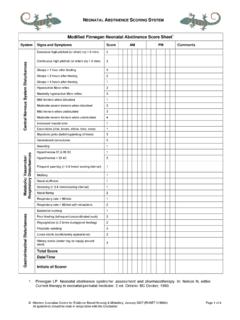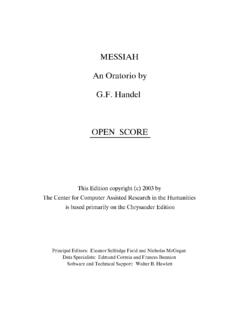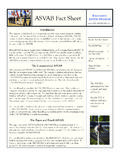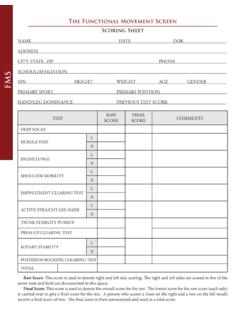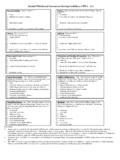Transcription of International Prostate Symptom Score (I-PSS)
1 International Prostate Symptom Score (I-PSS)Patient Name: _____ Date of birth: _____ Date completed _____Score:1-7: Mild8-19: Moderate20-35: SevereIn the pastmonth:Not atAllLess than1 in 5 TimesLess thanHalf theTimeAboutHalftheTimeMorethan Halfthe TimeAlmostAlwaysYourscore1. Incomplete EmptyingHow often have you had thesensation of not emptyingyour bladder?0123452. FrequencyHow often have you had tourinate less than every twohours?0123453. IntermittencyHow often have you foundyou stopped and started againseveral times when youurinated?0123454. UrgencyHow often have you found itdifficult to postponeurination?0123455. Weak StreamHow often have you had aweak urinary stream?0123456. StrainingHow often have you had tostrain to start urination?012345 None1 Time2 Times3 Times4 Times5 Times7. NocturiaHow many times did youtypically get up at night tourinate?012345 Total I-PSSS coreQuality of Life Due toUrinary SymptomsDelightedPleasedMostlySatisfiedM ixedMostlyDissatisfiedUnhappyTerribleIf you were to spend the rest ofyour life with your urinarycondition just the way it is now,how would you feel about that?
2 0123456 About the I-PSSThe International Prostate Symptom Score (I-PSS) is based on the answers to seven questionsconcerning urinary symptoms and one question concerning quality of life. Each questionconcerning urinary symptoms allows the patient to choose one out of six answers indicatingincreasing severity of the particular Symptom . The answers are assigned points from 0 to 5. Thetotal Score can therefore range from 0 to 35 (asymptomatic to very symptomatic).The questions refer to the following urinary symptoms:QuestionsSymptom1 Incomplete emptying2 Frequency3 Intermittency4 Urgency5 Weak Stream6 Straining7 NocturiaQuestion eight refers to the patient s perceived quality of first seven questions of the I-PSS are identical to the questions appearing on the AmericanUrological Association (AUA) Symptom Index which currently categorizes symptoms asfollows:Mild ( Symptom Score less than of equal to 7)Moderate ( Symptom Score range 8-19)Severe ( Symptom Score range 20-35)The International Scientific Committee (SCI), under the patronage of the World HealthOrganization (WHO) and the International Union Against Cancer (UICC), recommends the useof only a single question to assess the quality of life.
3 The answers to this question range from delighted to terrible or 0 to 6. Although this single question may or may not capture theglobal impact of benign prostatic hyperplasia (BPH) Symptoms or quality of life, it may serve asa valuable starting point for a doctor-patient SCI has agreed to use the Symptom index for BPH, which has been developed by the AUAM easurement Committee, as the official worldwide symptoms assessment tool for patientssuffering from SCI recommends that physicians consider the following components for a basic diagnosticworkup: history; physical exam; appropriate labs, such as U/A, creatine, etc.; and DRE or otherevaluation to rule out Prostate cancer.
